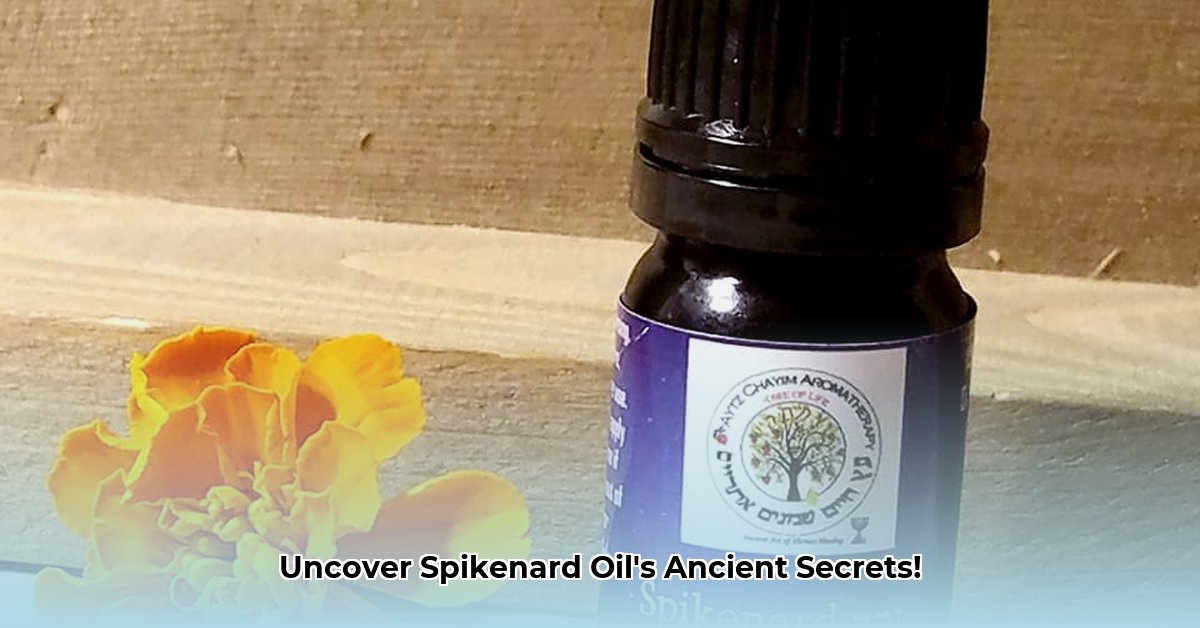
Understanding Spikenard Oil: Origins and Composition
Spikenard oil, derived from the Nardostachys jatamansi plant, boasts a rich history in traditional medicine, particularly in Ayurvedic practices. For centuries, it has been valued for its purported therapeutic properties. However, the scientific evidence supporting these claims remains limited and requires further investigation. This review will explore the current understanding of spikenard oil, separating substantiated facts from anecdotal evidence and unverified claims.
Chemical Composition and Variability: A Key Consideration
The chemical composition of spikenard oil is complex and varies significantly depending on several factors, including the plant's geographical origin, harvesting time, and extraction methods. Key components include sesquiterpenes, such as jatamansone and valeranone, which are believed to contribute to its potential biological activity. This inherent variability presents a significant challenge to standardization and limits the reliability of research findings. Consequently, the effects observed in one study may not be consistently replicated across different batches of spikenard oil.
Purported Benefits and the Supporting Evidence: A Critical Review
Spikenard oil is often touted for various benefits, but the scientific evidence supporting these claims is often limited to preclinical studies or anecdotal reports.
Sleep and Anxiety Relief:
Many users report improved sleep and reduced anxiety after using spikenard oil. While some preclinical studies have demonstrated sedative effects in animals, human clinical trials are lacking. Therefore, claims of efficacy for sleep and anxiety relief cannot be definitively substantiated. Further research is urgently needed. Is the calming effect of spikenard oil truly translatable to humans, or are existing studies insufficient?
Anti-inflammatory Properties:
In vitro (test-tube) studies suggest potential anti-inflammatory effects. However, these findings have not been consistently replicated in vivo (in living organisms), and large-scale human studies are absent. Thus, the assertion that spikenard oil possesses significant anti-inflammatory benefits in humans remains unsubstantiated.
Antimicrobial Activity:
Preliminary investigations suggest potential antimicrobial activity against certain bacteria and fungi. However, further research, particularly human clinical trials, is necessary to confirm these findings and determine the clinical significance of any observed effects.
Skincare Applications:
Traditional uses for skin conditions exist, but robust scientific evidence is lacking. While some individuals report positive results, controlled studies are needed to establish any real therapeutic impact on skin health.
Risks and Contraindications: A Cautionary Note
Generally, spikenard oil is considered safe for topical application when diluted with a carrier oil such as jojoba or almond oil and used in aromatherapy. However, potential risks exist:
- Skin irritation: Mild skin irritation or allergic reactions are possible. A patch test is always recommended before widespread application.
- Respiratory irritation: In rare instances, respiratory irritation may occur when using aromatherapy diffusers. Adequate ventilation is crucial.
- Internal ingestion: Internal ingestion is strongly discouraged due to the absence of sufficient safety data. Potential long-term consequences remain unknown.
- Pregnancy and breastfeeding: Use during pregnancy and breastfeeding is strongly contraindicated due to insufficient safety data and the potential for harm to the developing fetus or infant.
Quality and Standardization: Ensuring Product Reliability
The lack of standardized quality control in spikenard oil production significantly impacts research reliability and therapeutic effectiveness. Variability in chemical composition and manufacturing processes makes it difficult to compare results across different studies and hinders the development of consistent, high-quality products. Consumers should prioritize reputable brands providing transparent information about sourcing and production processes.
Conclusion: The Need for Further Research
While spikenard oil shows some promise based on anecdotal evidence and preclinical studies, robust scientific evidence to support its widespread therapeutic use is currently lacking. Before using spikenard oil for any health-related purpose, consultation with a healthcare professional is essential. Further research, including well-designed human clinical trials, is urgently needed to fully elucidate its therapeutic potential and safety profile.
References
[1]: (Insert citation here following a consistent style, e.g., APA) [2]: (Insert citation here following a consistent style, e.g., APA) [3]: (Insert citation here following a consistent style, e.g., APA)
(Add further references as needed)